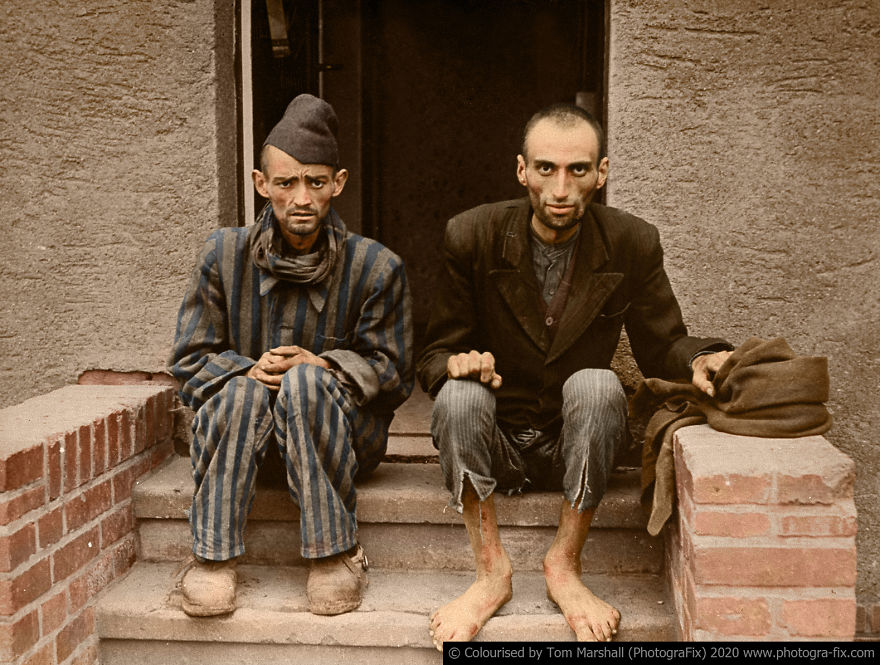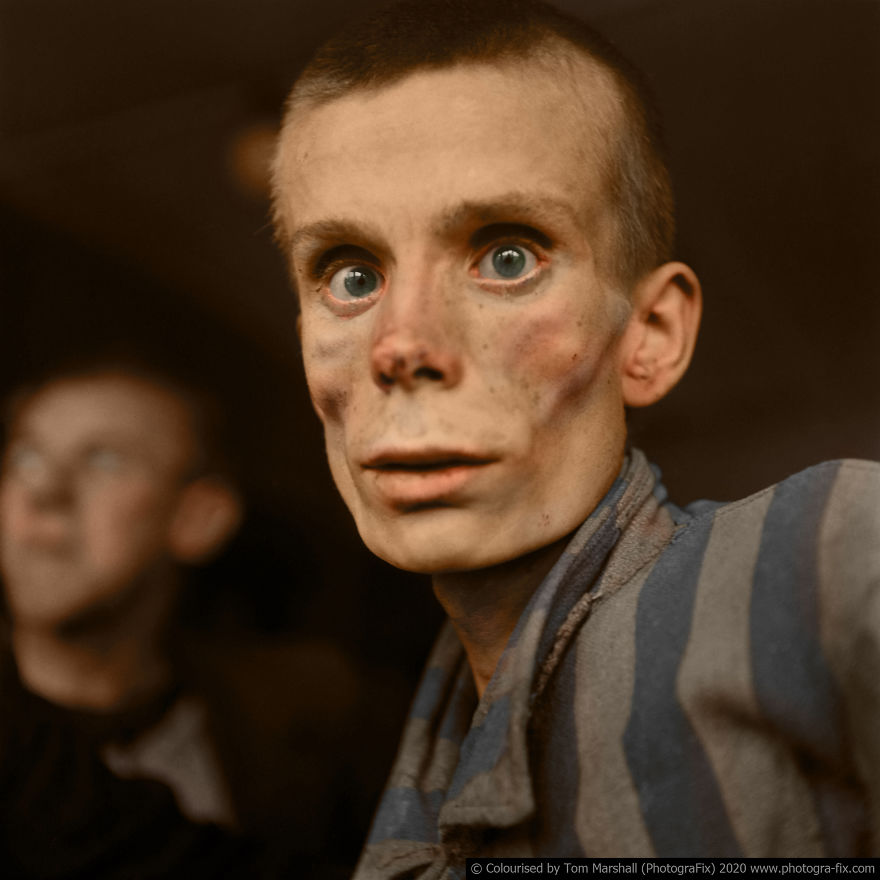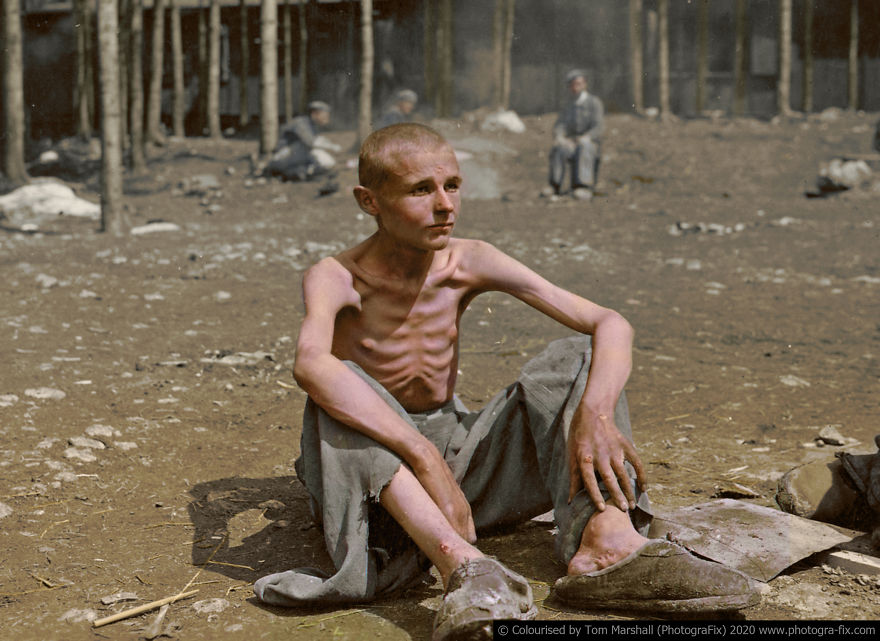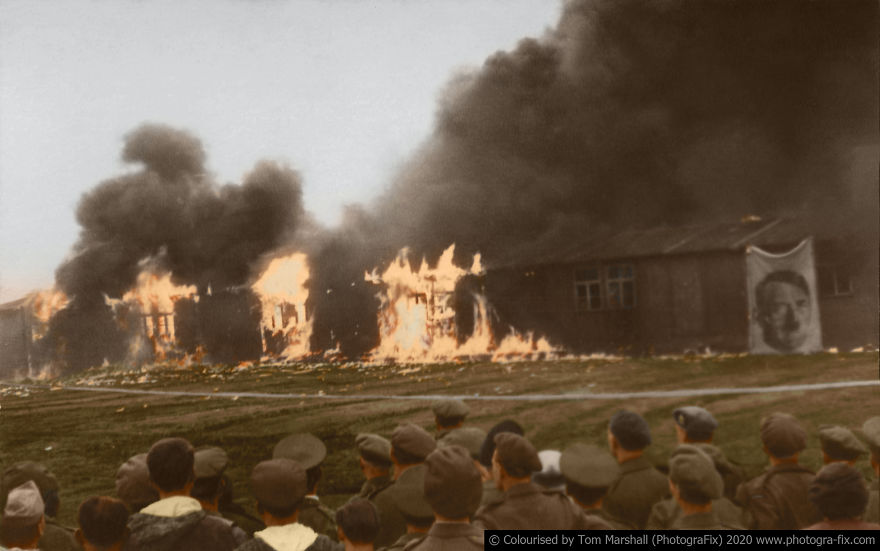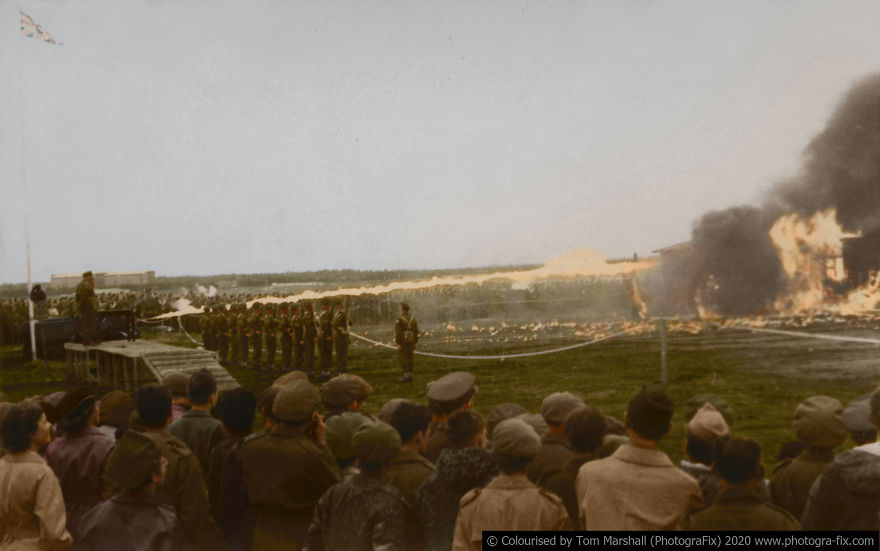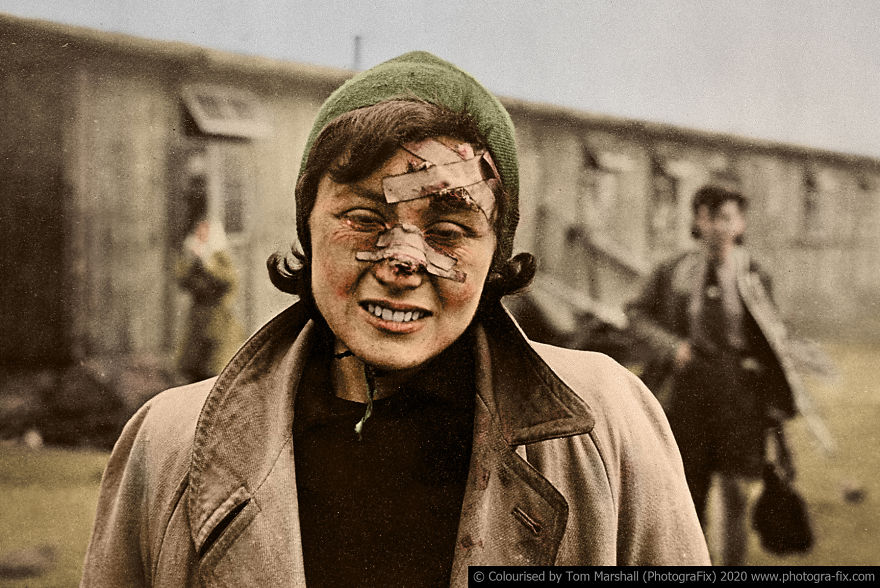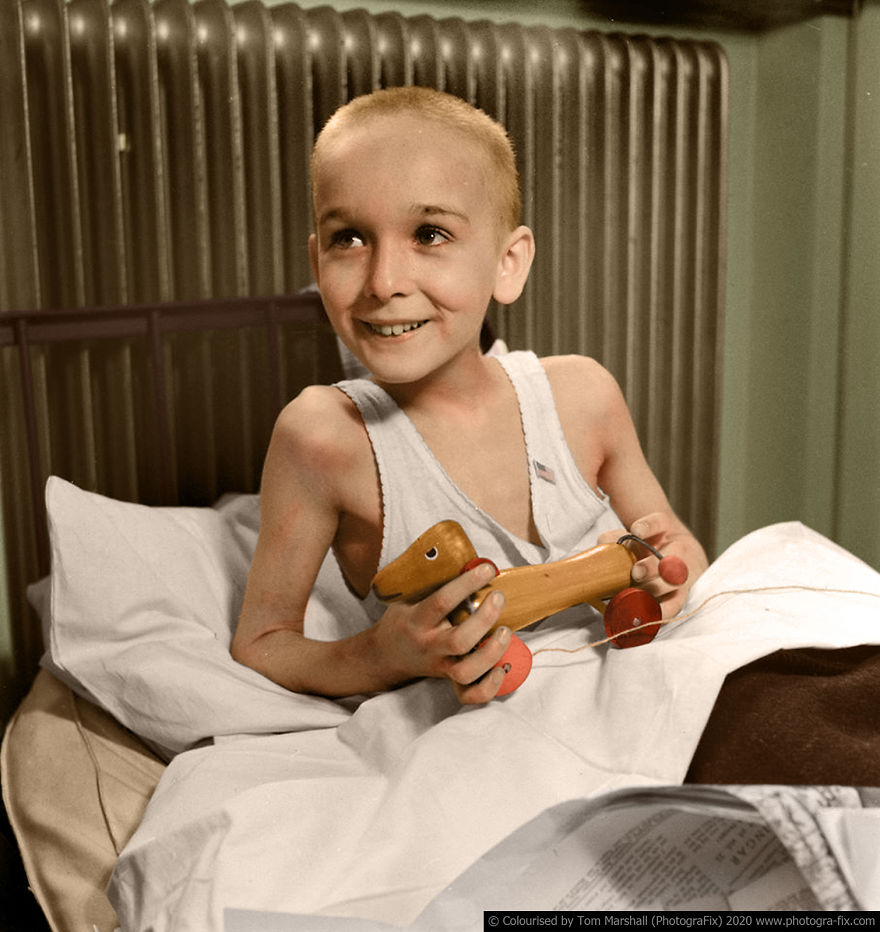This photo shows starved prisoners, nearly dead from hunger, posing in a concentration camp in Ebensee, Austria.
Ebensee was a sub-camp of the main camp ‘Mauthausen’ near the town of the same name. The camp was reputedly used for “scientific” experiments. It was liberated by the 80th Division of the U.S. Army.
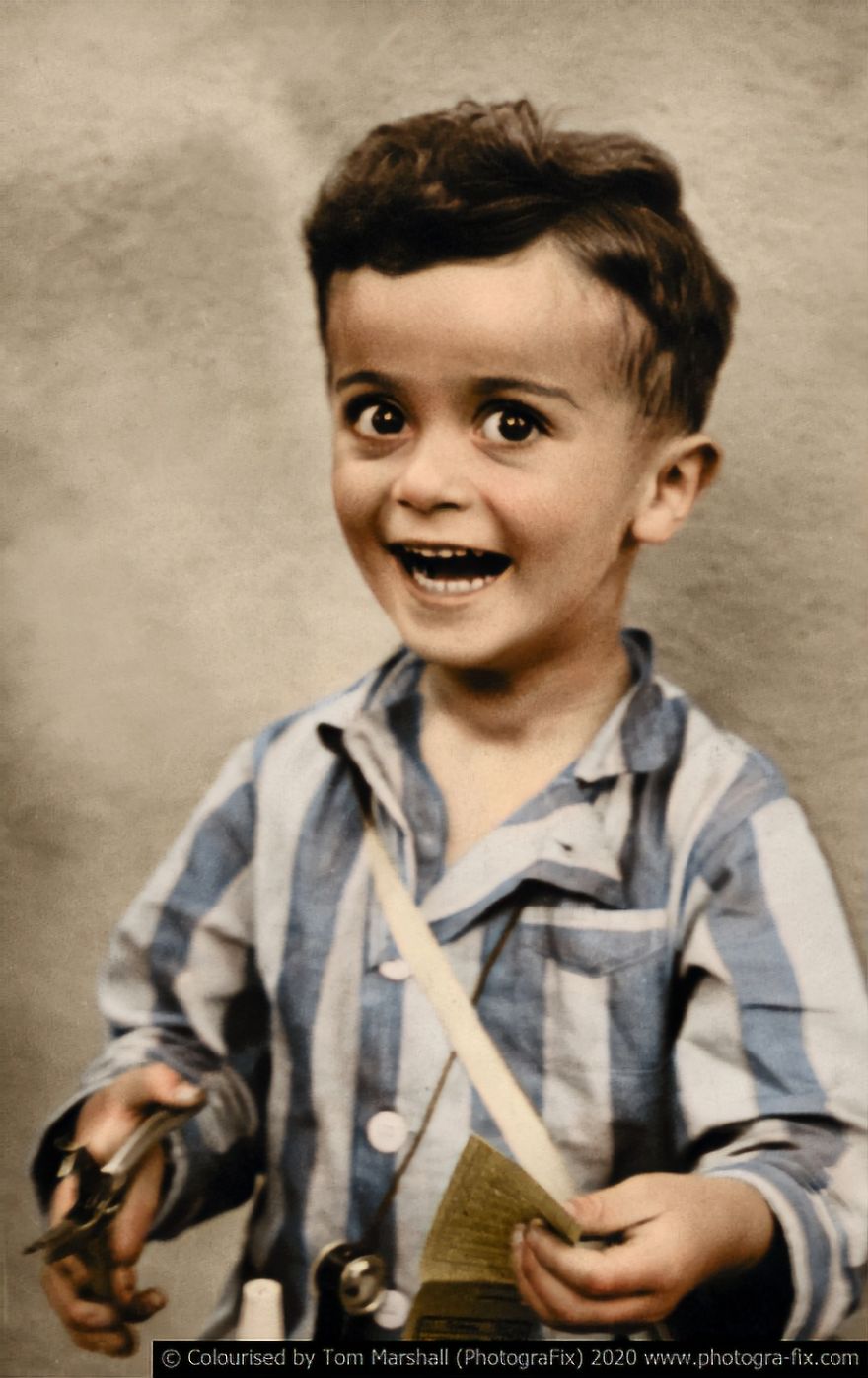 Istvan Reiner, aged 4, smiles for a studio portrait, shortly before being murdered at Auschwitz concentration camp.
Istvan Reiner, aged 4, smiles for a studio portrait, shortly before being murdered at Auschwitz concentration camp.
Men at Lager Nordhausen
Two staring, emaciated men, liberated inmates of Lager Nordhausen, a Gestapo concentration camp. The camp had from 3,000 to 4,000 inmates. All were maltreated, beaten and starved.
An 18-year-old girl
An 18-year-old Russian girl during the liberation of Dachau concentration camp in 1945. Dachau was the first German concentration camp, opened in 1933.
More than 200,000 people were detained between 1933 and 1945, and 31,591 deaths were declared, most from disease, malnutrition, and suicide. Unlike Auschwitz, Dachau was not explicitly an extermination camp, but conditions were so horrific that hundreds died every week.
A living skeleton
This man looks like a living skeleton, one of the many prisoners of the Ebensee concentration camp in Austria.
Burning Bergen-Belsen
My Great Grandfather Charles Martin King Parsons took this photo as he was a chaplain with the British Army and he entered Bergen-Belsen prison camp in April 1945.
The camp was rife with typhus, and once the large wooden huts had been cleared of the surviving prisoners, they were burnt to the ground in May 1945.
Taken by C.M.K. Parsons
Like many people affected by the horrors they saw during the war, my Great Grandfather never really spoke about his experiences at Bergen-Belsen and these photos show why.
He also took a series of photos including the mass graves around Belsen which I did not want to colourise as it didn’t feel like the right thing to do. These photos can be seen here.
Woman at Bergen-Belsen
One of the victims at Bergen-Belsen was this young woman, her face still bearing the scars of a terrible beating by the SS guards.
Holocaust survivor
It is hard to find any hope when viewing the horrors of these photos, but I wanted to include this one, as there were survivors of the Holocaust, many of whom are still alive today.
This photo shows a young Jewish refugee, rescued from a concentration camp, resting up in a hospital bed in Malmö, southern Sweden in 1945.
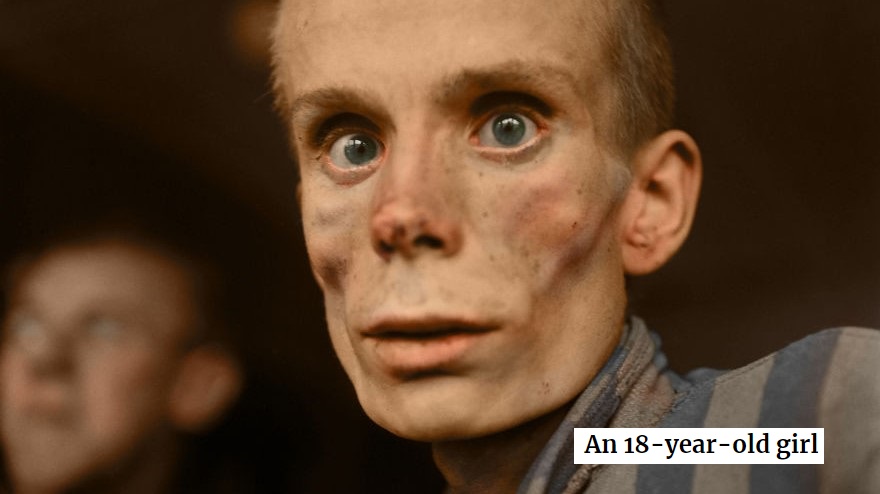
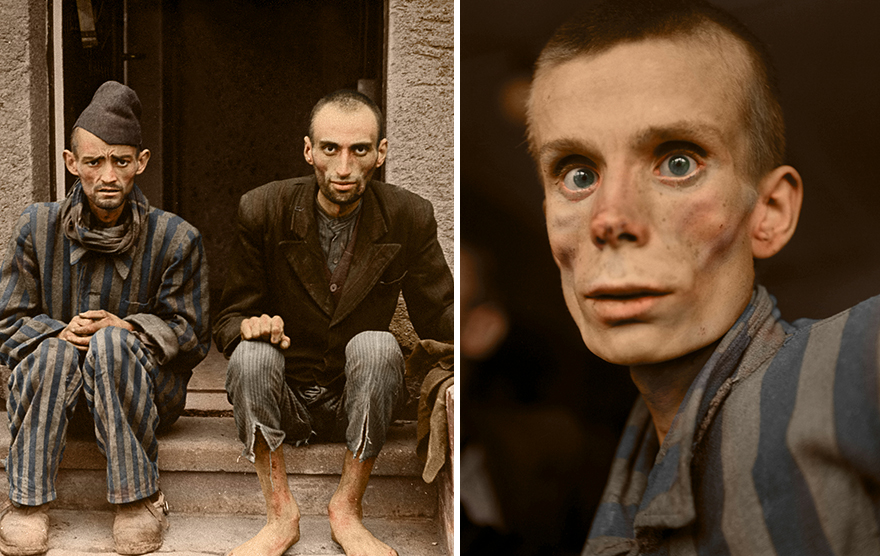
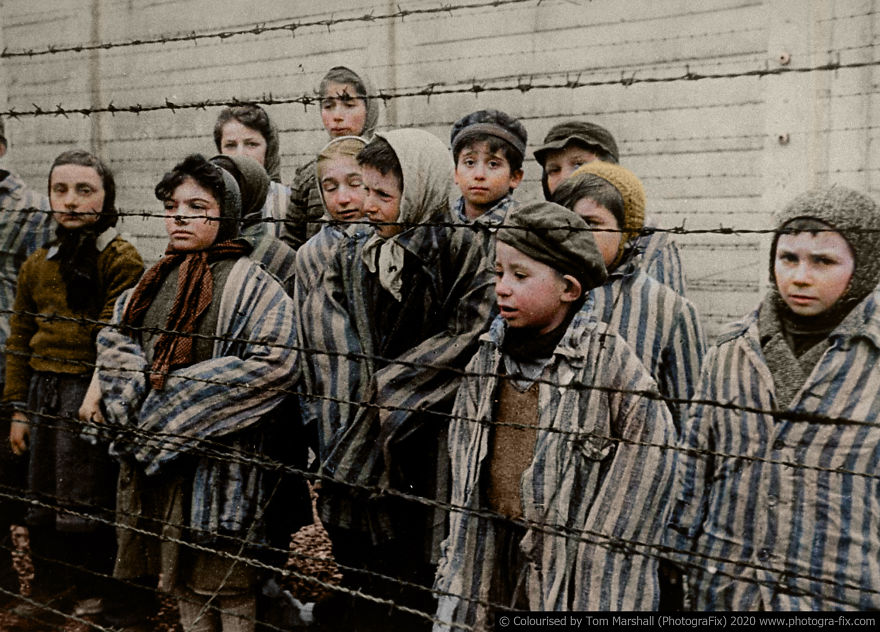
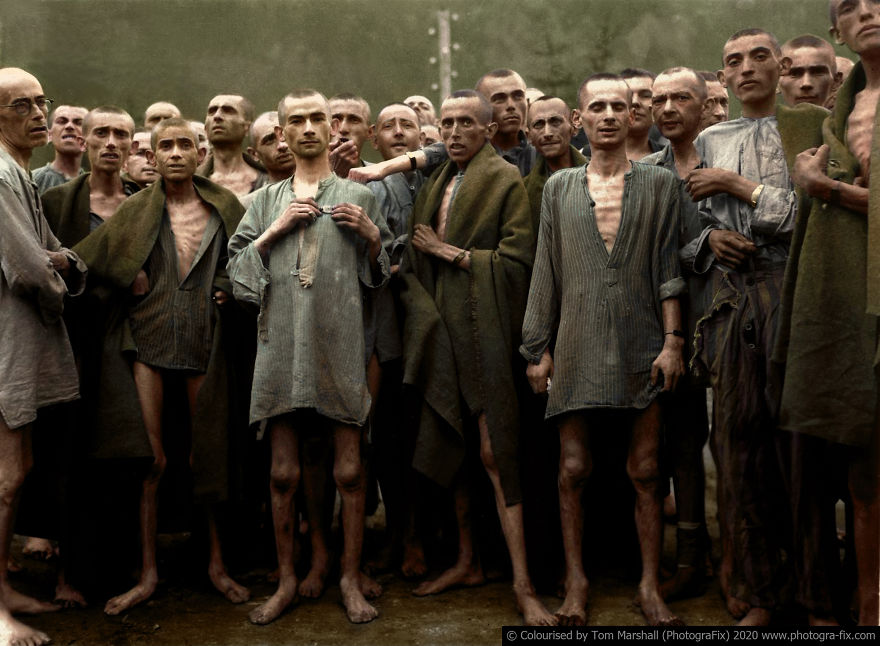
 Istvan Reiner, aged 4, smiles for a studio portrait, shortly before being murdered at Auschwitz concentration camp.
Istvan Reiner, aged 4, smiles for a studio portrait, shortly before being murdered at Auschwitz concentration camp.